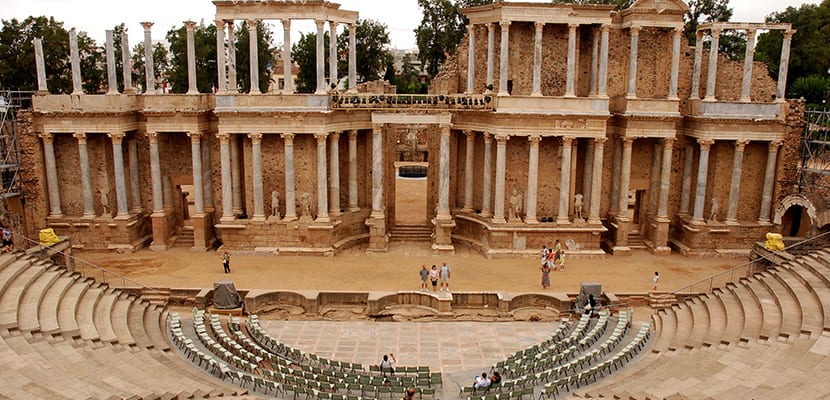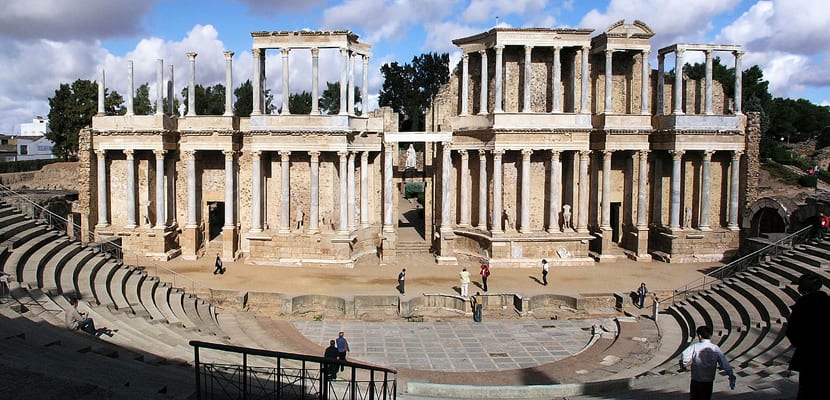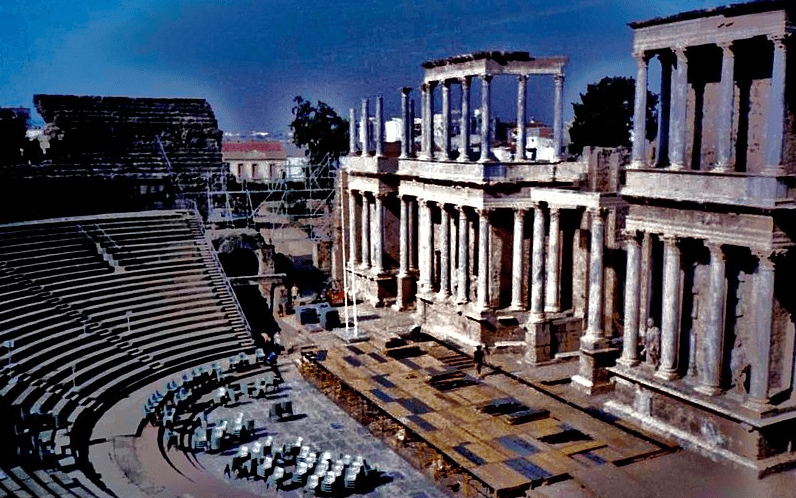
To the west of Spain is Mérida, the capital of Extremadura, which was founded by the Romans in the XNUMXst century BC. Here is located one of the most important architectural ensembles in Europe, of which the city's Roman theater is part.
Although the Romans were not very fond of the theater, a city with the prestige of Mérida had to have an impressive building for stage games. That of Augusta Emerita (as it was known at that time) had a capacity of 6.000 spectators, a very high number for the time according to the importance of this Hispanic city.
At present, every summer it hosts the performances of the Mérida Classical Theater Festival. An appointment that restores its splendor and the original function for which it was created centuries ago.
History of the Roman Theater of Mérida
The Roman Theater of Mérida was built under the patronage of Agrippa, Augustus's son-in-law, between 16 and 15 BC at the request of the consul Maco Vipsanio Agripa. Being totally exposed to inclement weather, it had to be repaired at the beginning of the second century during the government of the Emperor Trajan.
It was then that the current façade was erected, which has three openings through which the actors enter the stage. Later, under the rule of Emperor Constantine, a concrete road surrounding the monument and new architectural-ornamental elements were introduced. The stage for the performances featured a marble pavement, in addition to several statues and three doors.
The Roman Theater of Mérida had a capacity of 6.000 spectators. These were distributed from bottom to top according to social class in three sectors of stands, which were separated by barriers and corridors and accessed by stairs.
Later this place lived a long period of decline. For this reason, it was abandoned and covered with sand, in such a way that only the upper tier (summa cavea) was visible. Later the Roman Theater of Mérida received the name of The seven chairs for according to tradition, the Moorish sultans were said to have sat down to decide the fate of the city.
Archaeological excavations at the theater began in 1910. Since 1933 it has hosted the celebration of the International Festival of Classical Theater of Mérida and in 1962 work began for its partial reconstruction. Decades later it was declared a UNESCO World Heritage Site in 1993.

Distribution of the Roman Theater of Mérida
The theater is located next to the wall and with a large part of its stands supported by the San Albín hill, in a peripheral location within the Roman complex.
The spectators of the Roman Theater of Mérida occupied their seats in one of the three sectors of existing stands depending on their social stratum: caveas summa, media and ima, which were separated by barriers and corridors.
When the excavation work began in 1910 to recover the remains of the theater, the deteriorated upper tier was the only thing that protruded from the sand that covered it. In the past, when the access vaults were destroyed, only the seven bodies of its steps remained standing, which led to these ruins being baptized as the Seven Chairs, of which we previously spoke.
The cavea ima was the place occupied by the knights of Emerita Augusta. In Trajan's time a sacred space was modified and erected in its center surrounded by a marble railing. In front of the cavea ima we see three lower and wider tiers, where the priests and magistrates enjoyed the spectacle.
The semicircular space where the choir, the orchestra was located, has a marble floor, the result of a late reform. The scene closes with a 30-meter-high wall structured in two bodies of columns in which we can see statues of deified emperors and gods. Everything rises on a podium decorated with rich marbles.
Behind the wall of the stage there is a large porticoed garden closed by walls with niches that were decorated with statues of members of the imperial family. At first it was interpreted as a library, but the discovery of several statues, including the famous portrait of Augustus veiled as Pontifex Maximus and another of Tiberius, as well as several inscriptions related to the imperial cult, led to the interpretation that the place was destined to this cult, which later would reside in the Temple of Diana.

Image | Wikimedia Commons
Schedules and tickets
Schedule
- From October 1 to March 31 from 9:00 a.m. to 18:30 p.m.
- From April 1 to September 30 from 9:00 a.m. to 21:00 p.m.
Price Plans
- Individual ticket: € 12 (normal) - € 6 (reduced)